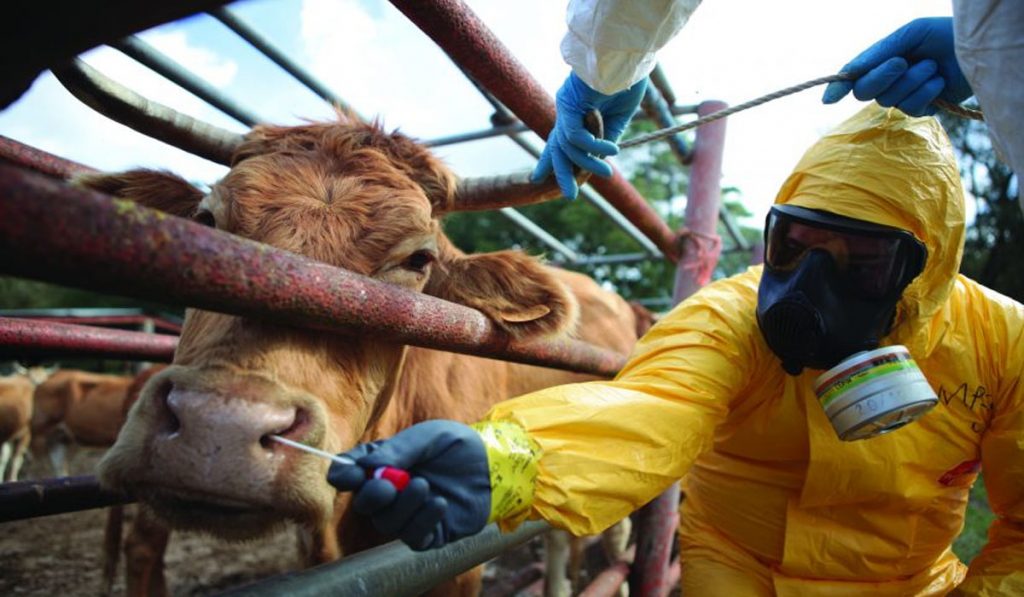The spread of infectious animal diseases is reaching new regions and affecting species previously untouched, with nearly half of these diseases capable of transmitting between animals or even to humans, according to the first-ever State of the World’s Animal Health report released by the World Organisation for Animal Health (WOAH) on May 23, 2025.
The report draws attention to the increasing frequency and severity of diseases such as African Swine Fever (ASF), avian influenza, foot and mouth disease (FMD), and peste des petits ruminants (PPR). It warns that the rising presence of these diseases is destabilising global food systems, posing serious threats to food security, public health, and biodiversity around the world.
In 2024 and early 2025, major outbreaks were recorded across different regions, driven by climate change, growing international trade, and the evolving nature of pathogens. Emmanuelle Soubeyran, director general of WOAH, highlighted that the spread, impact, and prevalence of infectious animal diseases are changing, creating new challenges for agriculture, food security, human health, and natural ecosystems.
Nearly half of the diseases notified to WOAH between 2005 and 2023 were zoonotic, meaning they could infect humans, underlining the close links between animal health and human health.
One of the most notable events of 2024 was the rapid spread of ASF, a highly contagious disease affecting pigs, which jumped over 1,800 kilometers to Sri Lanka, marking the most significant disease leap of the year. This indicated that no region could be considered safe from ASF anymore. Montenegro and Albania also experienced their first ASF outbreaks in early 2024.
Across 16 countries and territories, over 6,800 outbreaks were reported during the year, leading to more than 222,000 domestic pig losses. Since ASF first entered Georgia in 2007, it has spread across Europe, Asia-Pacific, and the Americas, causing major economic damage and threatening pork supplies worldwide.
The disease is especially diffcult to manage due to wild boars, which act as virus reservoirs, making eradication a challenge. Avian influenza, commonly known as bird flu, has devastated bird populations over the last two decades, resulting in the death or culling of over 630 million birds. In 2024, the virus affected new regions and species, including mammals, which marked a significant shift in its pattern. More countries reported outbreaks in nonpoultry species than in poultry, with mammal outbreaks doubling compared to the previous year.
Although the risk of human infection remains low, the increasing infections in mammals such as cattle, cats, and dogs raise concerns about the virus evolving to spread more easily among mammals and possibly humans. France became the first European Union country to introduce a nationwide vaccination campaign in ducks in late 2023, helping to reduce outbreaks significantly despite predictions of much higher spread.
The report also reviews other serious diseases impacting livestock worldwide. Bluetongue virus outbreaks were reported in 24 countries, affecting ruminants like sheep, cattle, and goats through biting midges. Foot and mouth disease outbreaks appeared in 18 countries, including Germany’s first case since 1988 and the European Union’s first since 2011.
New strains were also detected in parts of Africa and the Middle East. Lumpy skin disease emerged in northern Africa for the first time, while also reappearing in parts of Asia. The New World screwworm was detected in Mexico for the first time in decades and caused numerous outbreaks in Central American countries.
Peste des petits ruminants, once confined to the Global South, resurfaced in parts of Europe, prompting increased vigilance. Despite these alarming trends, many of these diseases are preventable with vaccination, better hygiene, and improved biosecurity. However, access to vaccines remains uneven across the globe, and challenges persist in production, distribution, and adoption of these preventive measures.
To address the growing threat, WOAH stresses the importance of strengthening international cooperation and ensuring equitable access to safe and effective vaccines, alongside other control efforts.
The report serves as a call to action for the global community to protect animal health, support food security, and safeguard human well-being in an increasingly interconnected world.
